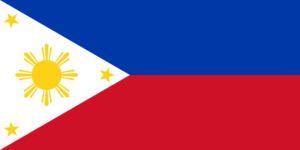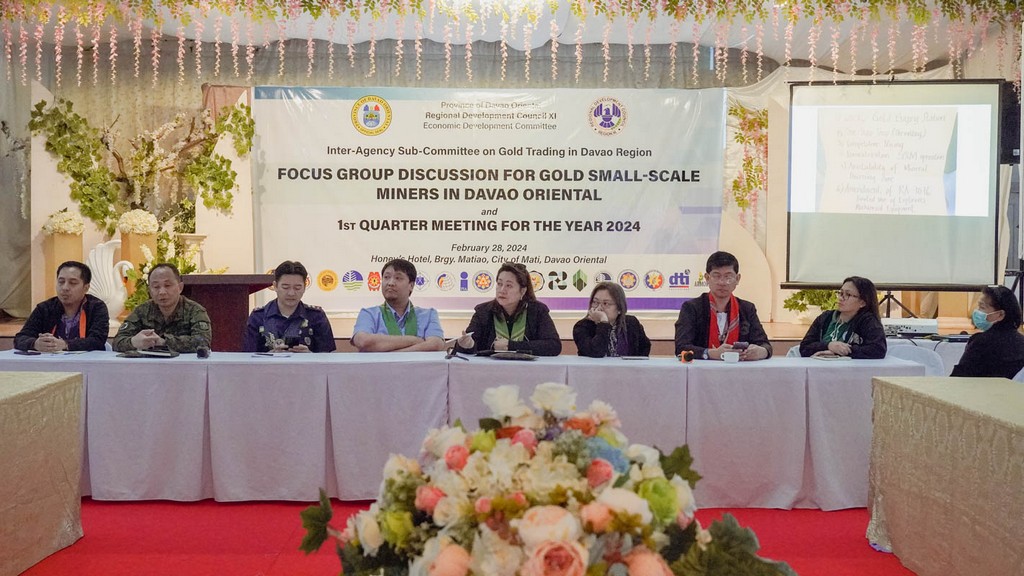City of Mati, Davao Oriental — A very bright prospect awaits the highly ambitious bid of Davao Oriental Governor Nelson Dayanghirang to have the highly majestic crown jewel, Pujada Bay, in the City of Mati as among the World’s Most Beautiful Bays.
Two top officials of the Club of the Most Beautiful Bays in the World from France and Canada has arrived just recently in this capital city of Davao Oriental to conduct a four-day “grand validation and visit” in connection with the Governor’s application to have Pujada Bay be declared among the world’s most beautiful bays.
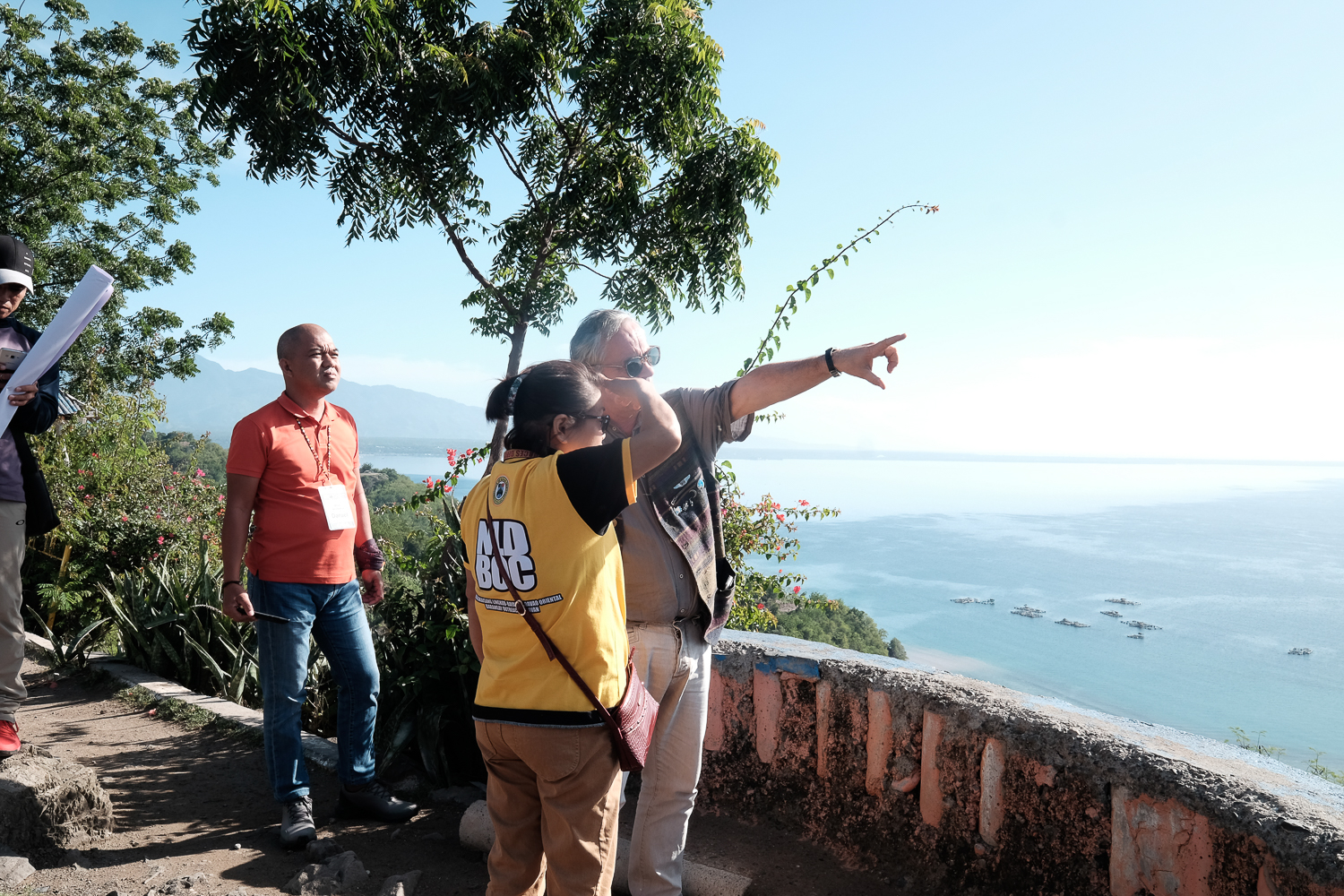
“Pujada Bay is almost a virgin paradise!” says Bruno Bodard, general manager of the Club of the Most Beautiful Bays in the World. “It is nicer. It is much more beautiful than we expected. The Philippines is a very nice country. You have the jewel in Pujada Bay,” adds Bodard who hails from France.

Pujada Bay is a picturesque site of 20,887-hectare U-shaped bay located in the idyllic City of Mati, the provincial capital of Davao Oriental. The bay is part of the Philippine Sea fronting the Pacific Ocean. The bay is bounded in the east by the Guang-Guang Peninsula and by the Pujada Peninsula in the west, with Pujada Island standing in the bay’s mouth like a loyal guard. Because it is protected from both sides from the waves of the open sea, the bay offers shelter for seafarers and fishers during storms. With mountain ranges in the backdrop, white sand beaches in the shorelines and with its calm, blue waters, the bay offers a stunning view to anybody who happens to take a look at the landscape and seascape and to those adventurous who dare to fly with a light craft offering services in the area.
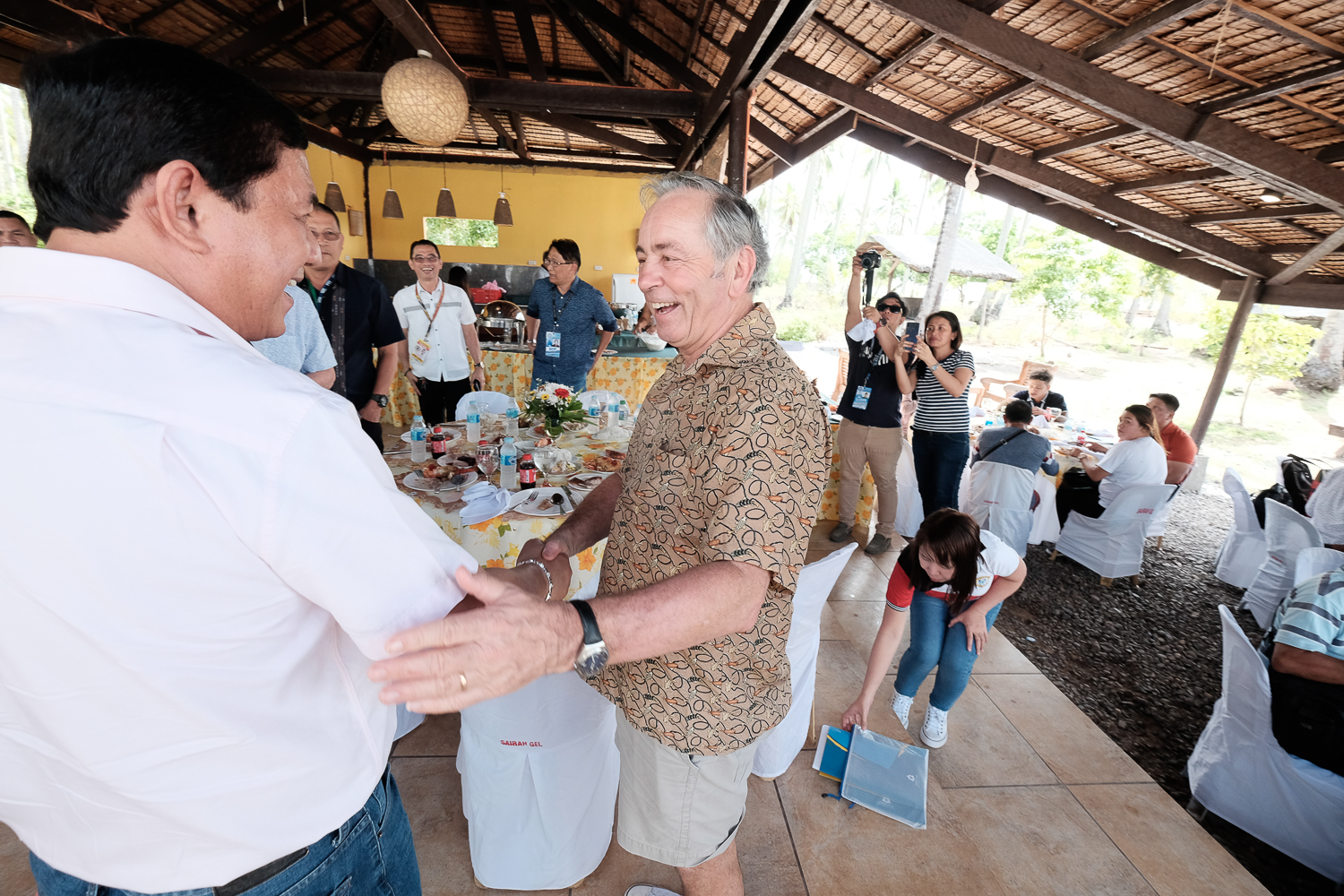
Bodard, who met Governor Dayanghirang and City of Mati Mayor Michelle Nakpil Rabat, says that to be a member of the Most Beautiful Bays in the World Club “is to commit yourself to saving the natural heritage of your bay. You have to preserve the identity of your bay and respect the way of life and the traditions of those that inhabit the area while ensuring economic development compatible with these commitments.”
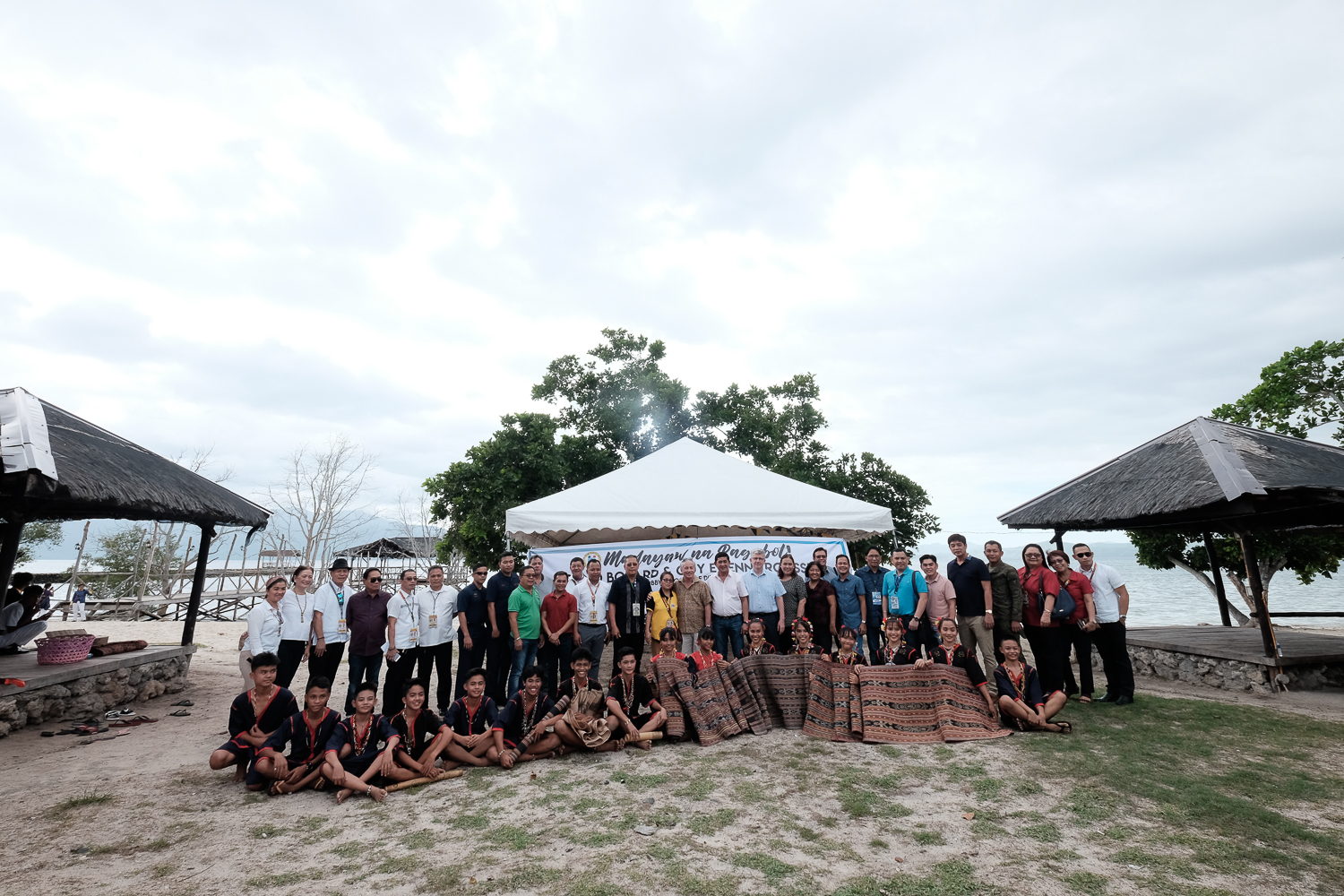
Among the uniquely beautiful features of the Pujada Bay is a promontory locally known as “Sleeping Dinosaur Island” because of its form like a reclining T. Rex. The background in the horizon shows Mount Bandera on the left in the village of Lawigan, the endpoint of the eastern side of the bay, and the Pujada Island on the right, which is at the mouth of the bay. Between Pujada Island and Mount Bandera lies a four-hectare Waniban Island. Behind Pujada Island are two “vanishing islets” depending on the tide — the Oak and Ivy sandbars. These islands and islets, all with white powdery sands, are located at the mouth of the bay, as if positioning themselves like faithful sentinels, guarding the area against intruders of any kind. Indeed, there are many mystic and folkloric accounts of the native communities in the area regarding these islands.

“One of the reasons we applied Pujada Bay to the Most Beautiful Bays in the World Club is to share its magnificent assets to the people of the world who would like to experience the natural and cultural richness of our place. The people of Davao Oriental are very proud of Pujada Bay and consider it a jewel of the province. We hope that you are one with us in considering this bay beautiful, not only physically with its landscape and seascape, but also ecologically with its rich marine biodiversity. It is therefore a top priority in terms of maintenance and enhancement of its natural beauty because this is a God-given gift that is meant to be shared and enjoyed not only today but more so in the coming years and the generations to come,” Governor Dayanghirang told the visiting officials of the Most Beautiful Bays in the World Club.

ADMISSION CRITERIA
The visiting officials of the Club from France and Canada says among the criteria for admission to their Club are: “The bay must open onto a shoreline with the concave nature of the site largely dominant. The structure applying must represent all or part of the bay and be locally recognized as such. The bay must be the object of protective measures. The bay must present an interesting flora or fauna. The bay must present outstanding and attractive natural habitats. The bay must be nationally recognized. The bay must be emblematic to the local population. Economic activities in the surrounding area of the bay must be able to coexist. There should be a potential for economic development.”

“The work you do is remarkable. I think we have more to learn from you than to give you lessons,” Bruno Bodard, general manager of the Most Beautiful Bays in the World Club, told the local government officials here.
PROTECTED AREA
Pujada Bay, with its islands, islets and sandbars as well as the promontory in its western interior part that looks like a reclining dinosaur, is a declared protected area named Pujada Bay Protected Landscape and Seascape under the National Integrated Protected Area System. The bay serves as the catchment of runoffs from two other protected areas in the City of Mati: the Mati Protected Landscape, and the Mount Hamiguitan Range Wildlife Sanctuary which is a UNESCO World Heritage Site. Since these other two protected areas are located on higher grounds and can be seen around the bay, both areas add to the natural beauty of the bay’s landscape and enrich the ecological values of the site.
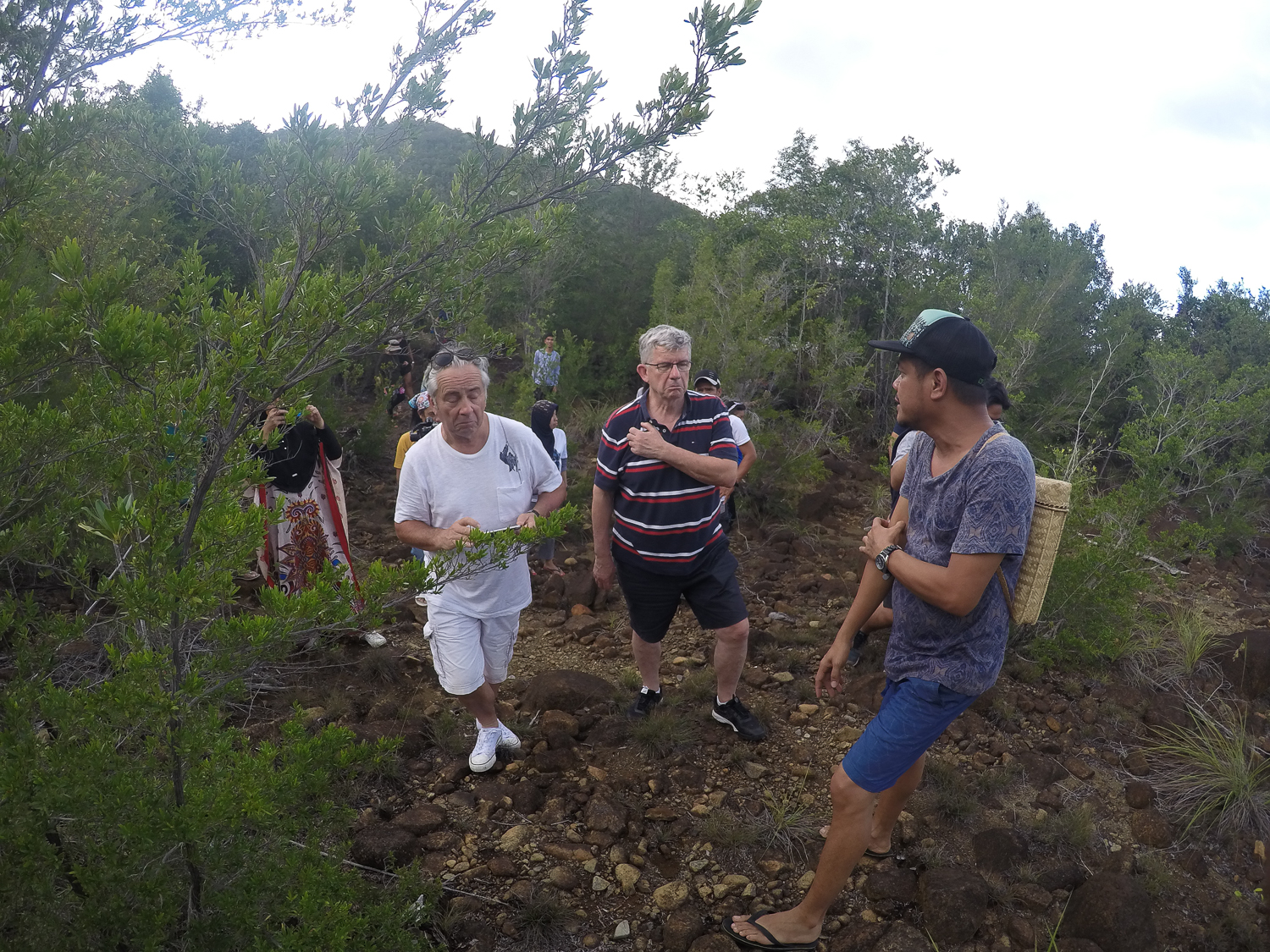
The biodiversity-rich Pujada Bay is part of the so-called Coral Triangle, the region that possesses the world’s highest levels of marine biodiversity. Pujada Bay is a traditional fishing ground of the Mandaya and Kaagan tribes, the local indigenous peoples of Davao Oriental who are now adjusting their fishing practices in harmony with the conservation and protection of the site.

“The beauty of Pujada Bay appeals to the people looking for an alternative from crowded and modern marine sites and to those who wish to commune with nature because it offers natural seascape and landscape replete with rich biodiversity — both in the marine area and in its embracing terrestrial arms that are internationally, nationally and locally protected, the Mount Hamiguitan Range Wildlife Sanctuary, which is declared a UNESCO World Heritage Site and an ASEAN Heritage Park, and being sustainably managed by local stakeholders. Having met the criteria for admission, it is hoped that Pujada Bay would qualify as a member of the Club of the Most Beautiful Bays in the World,” says a joint statement by City of Mati Mayor Michelle Nakpil Rabat and Davao Oriental Governor Nelson Dayanghirang.
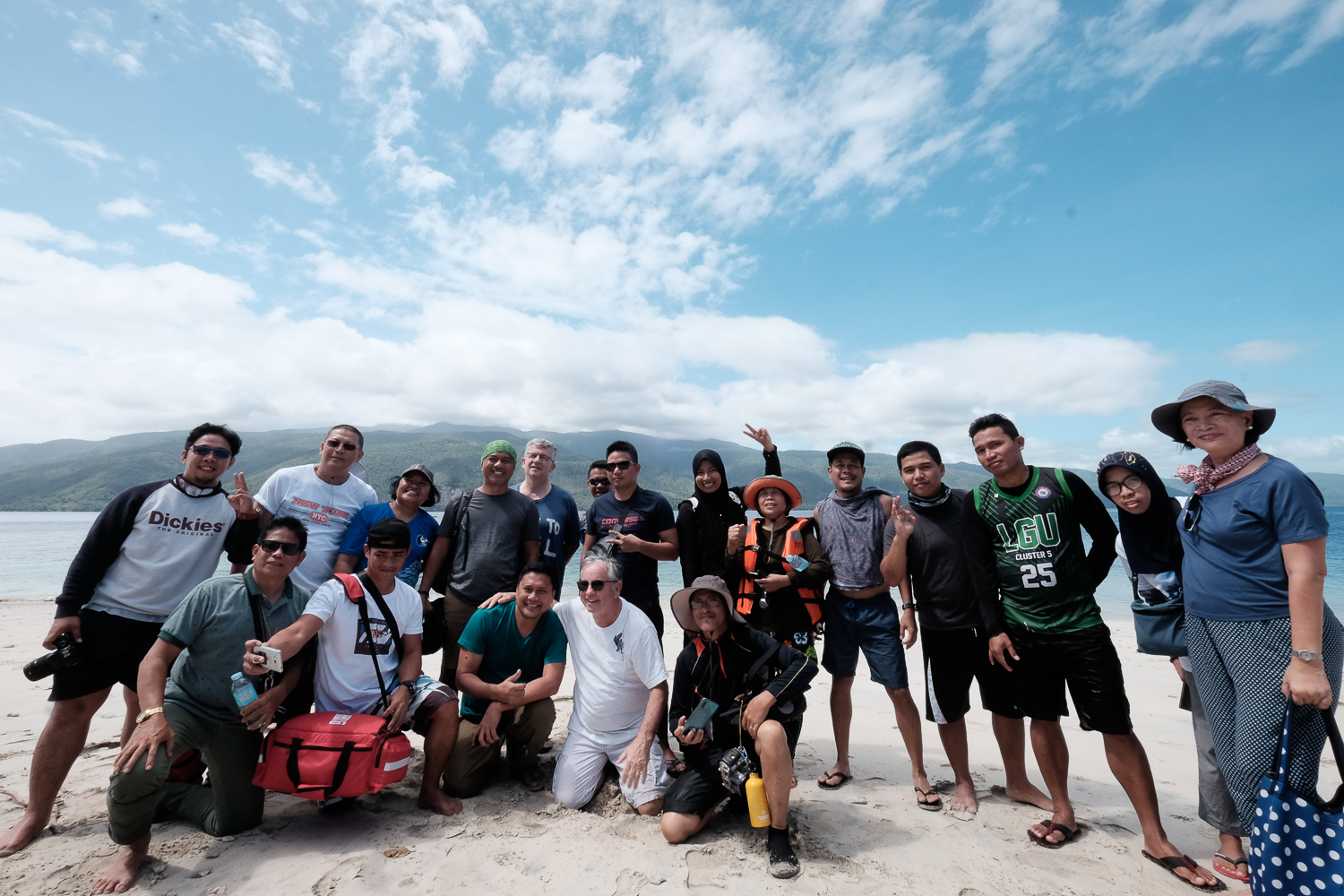
“When we come back to Paris and Canada, we will make a report to our official board. And probably the board will follow our recommendation. The work you do, the beauty of the place, the protection of nature that you have is a right example for all over the world… You must keep the peace of this jewel for the future,” says Bruno Bodard, the general manager of the Club of the Most Beautiful Bays in the World. By Ferdinand Zuasola/Photos by Eden Jhan Licayan
